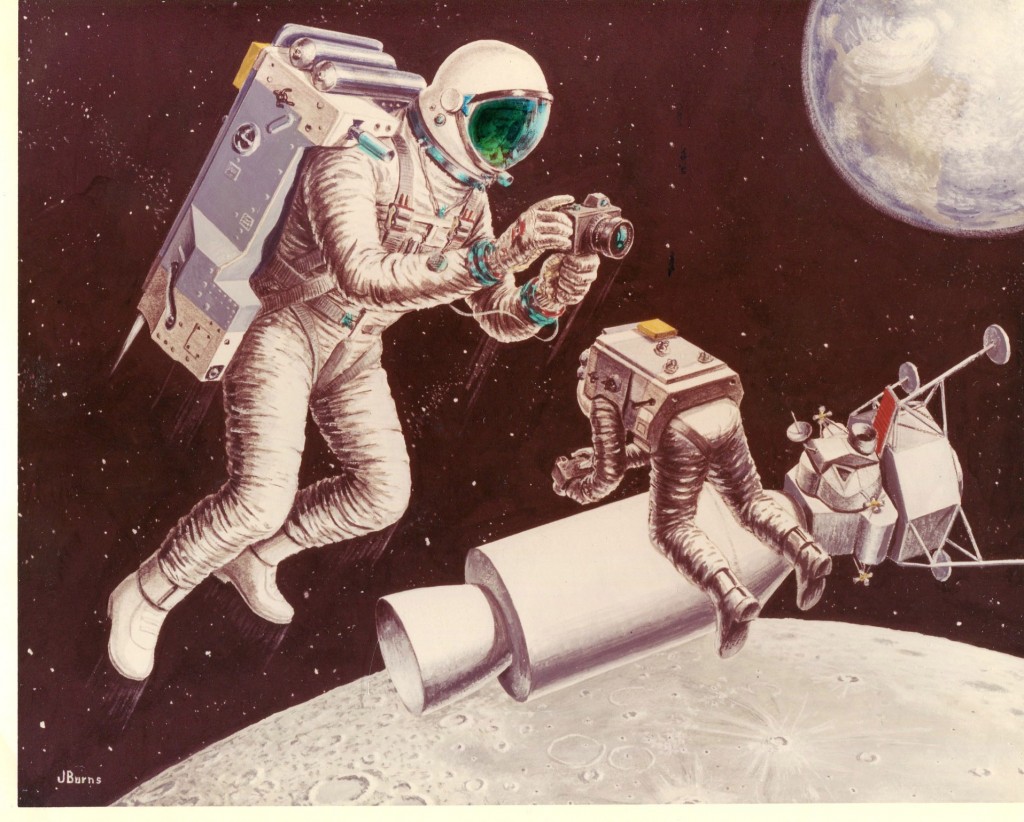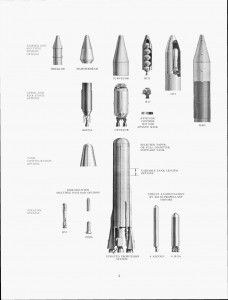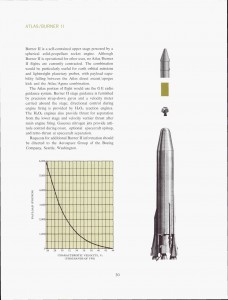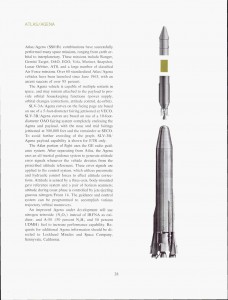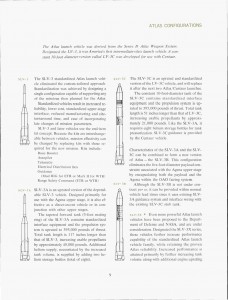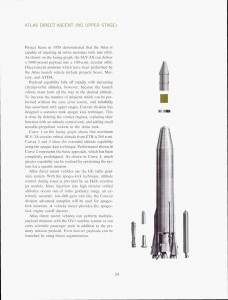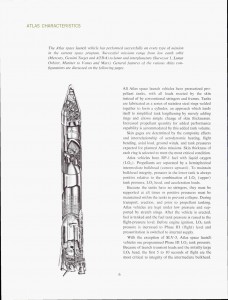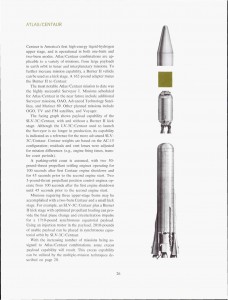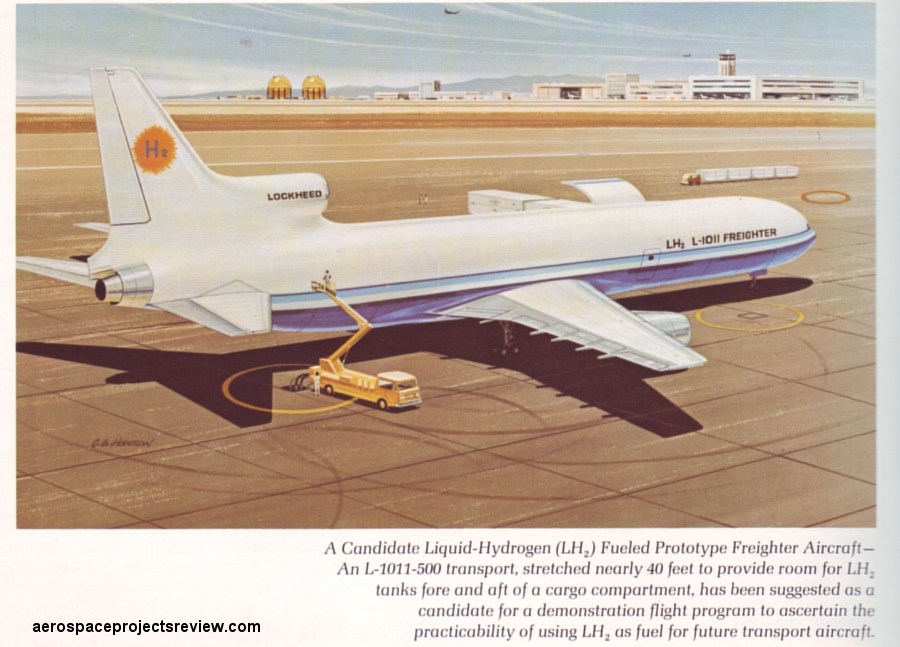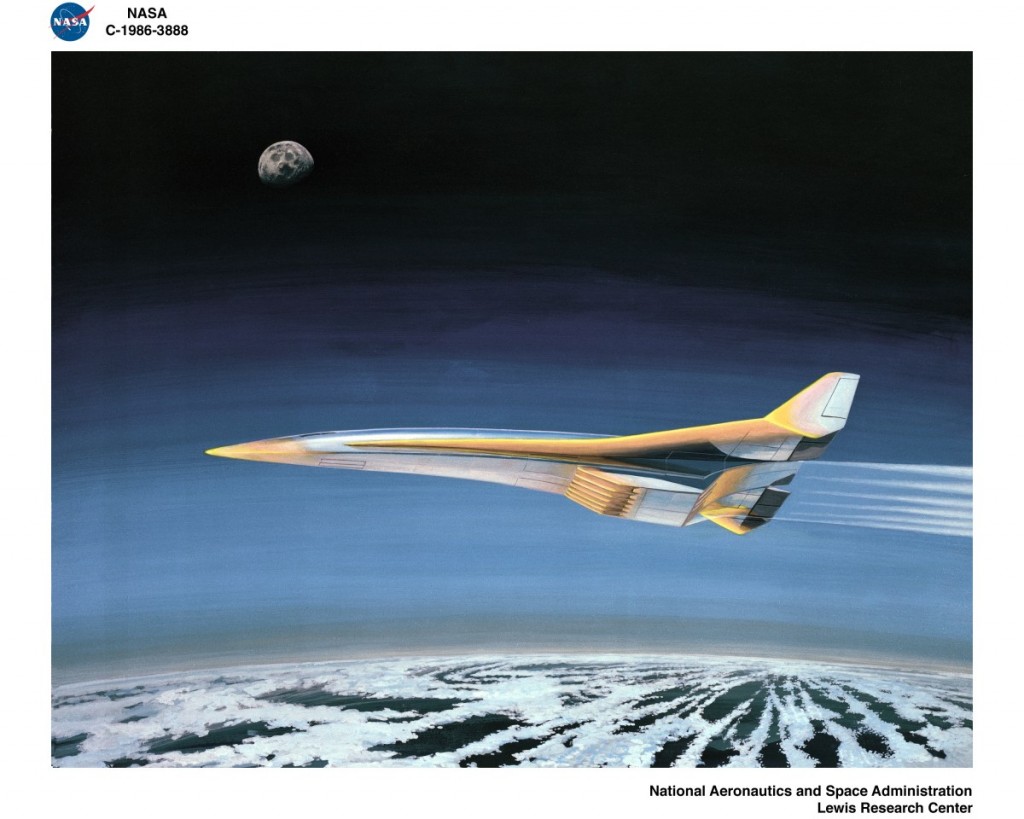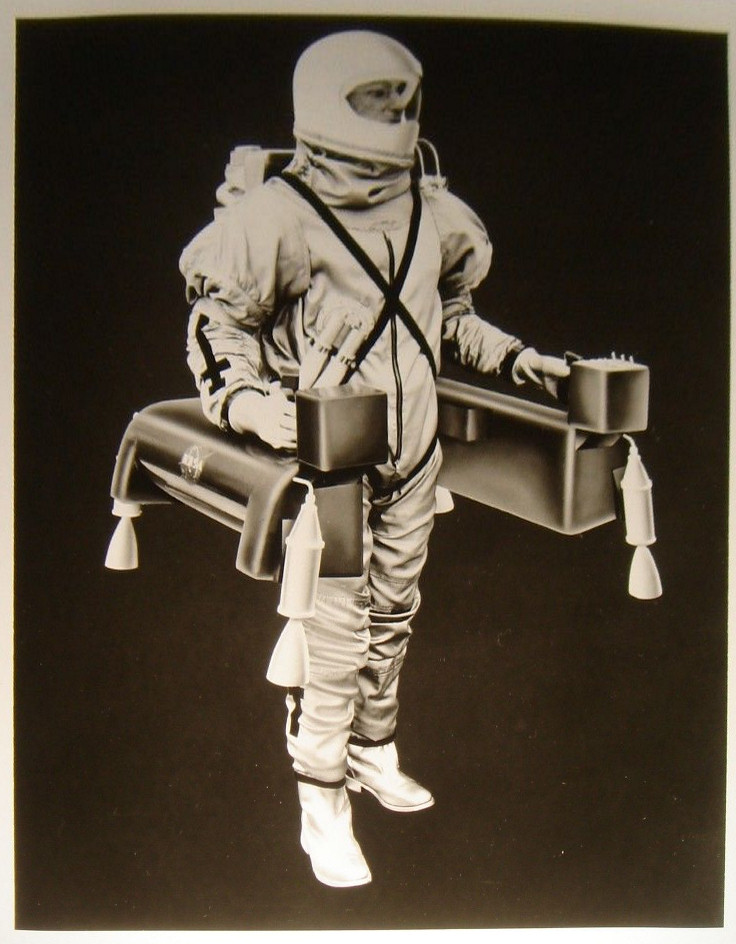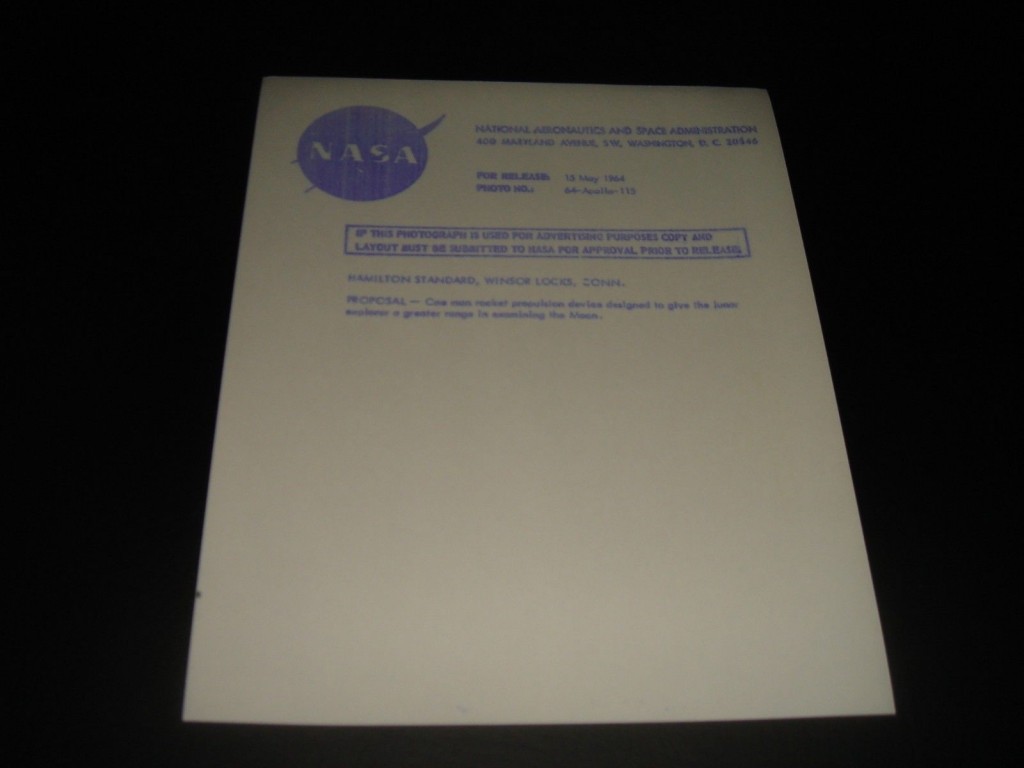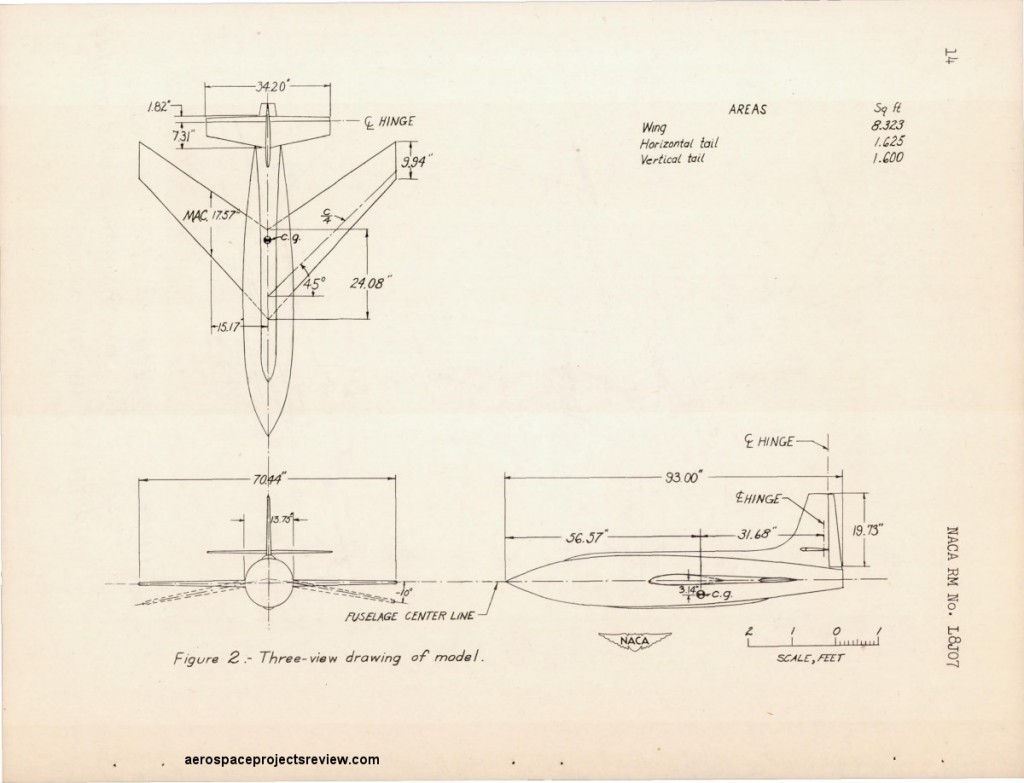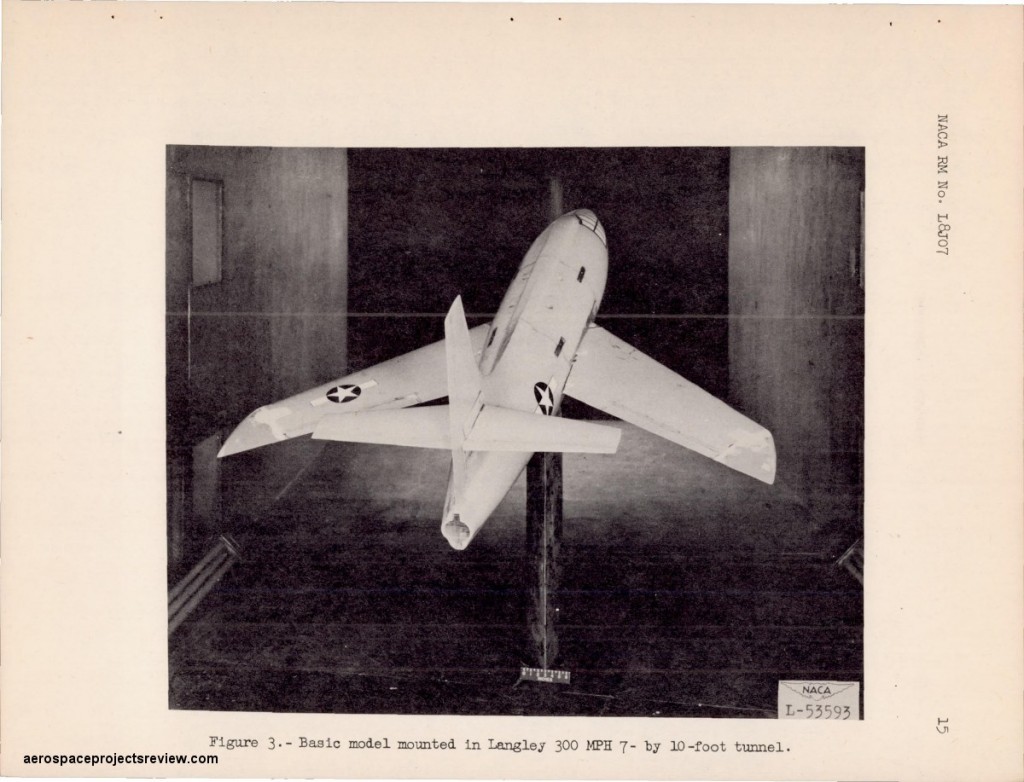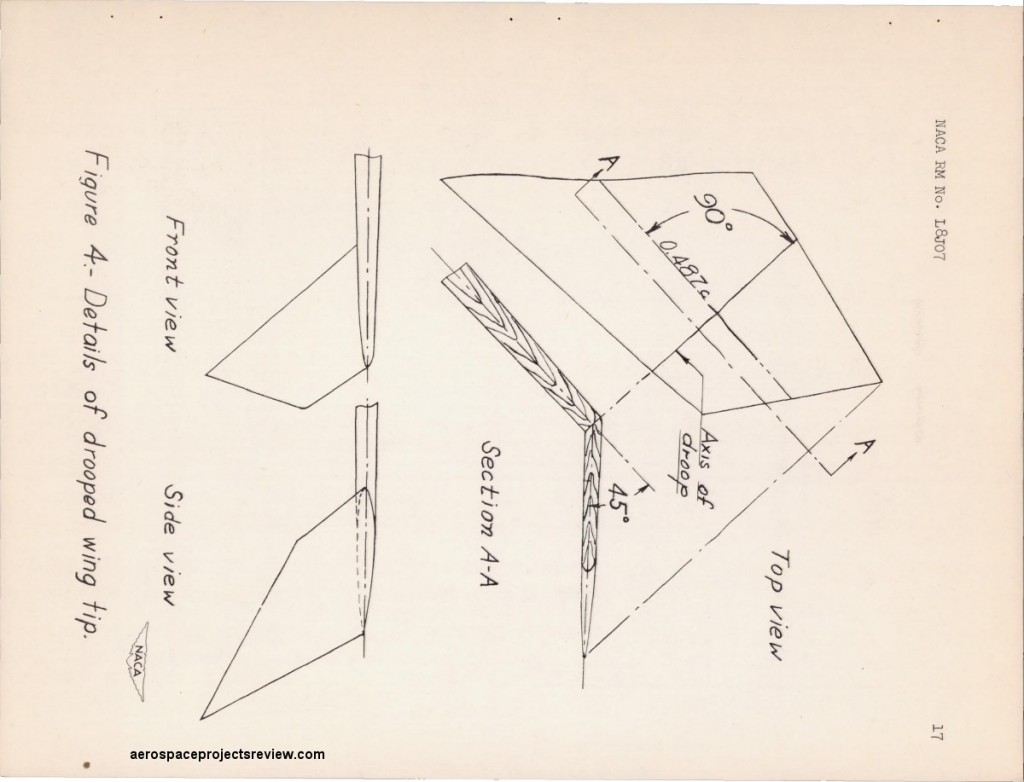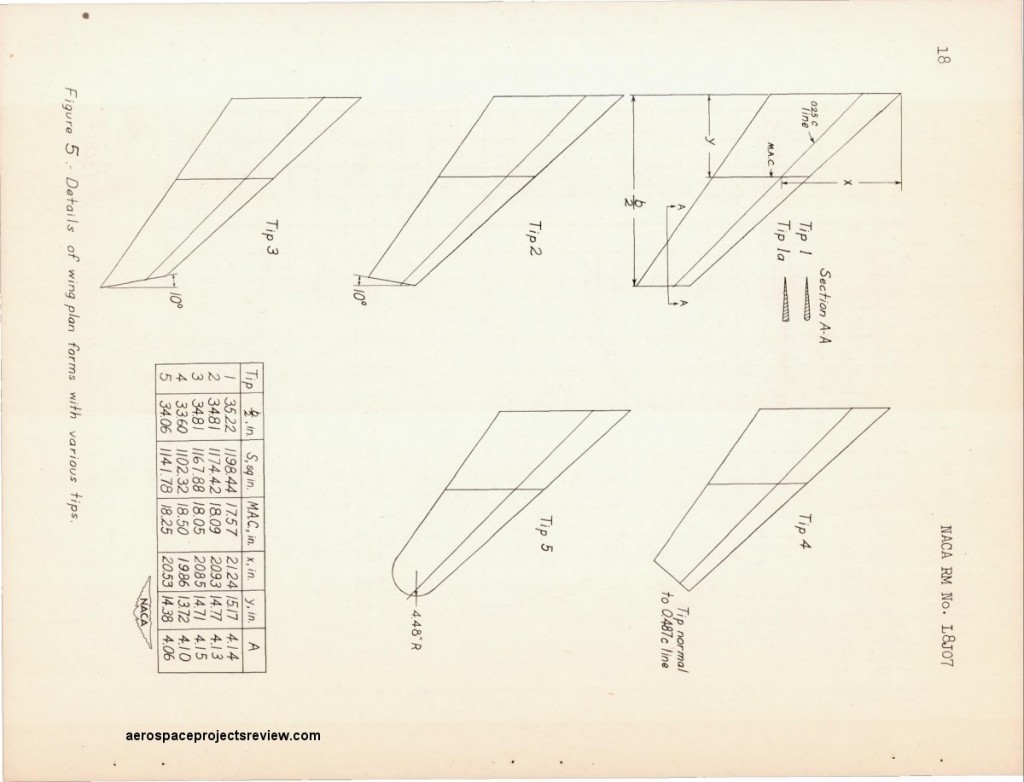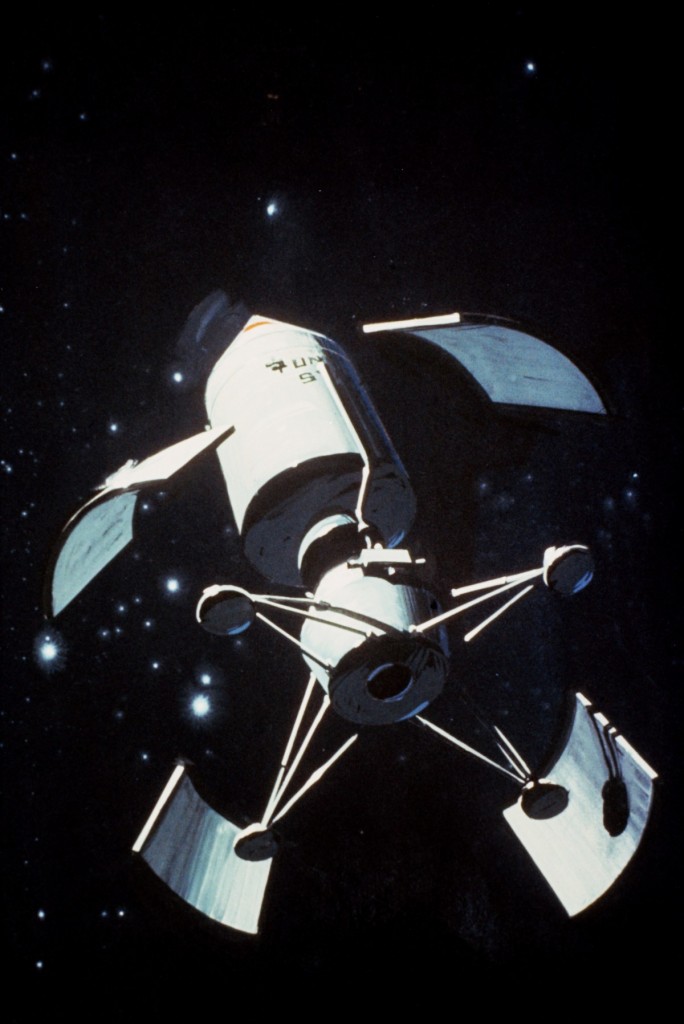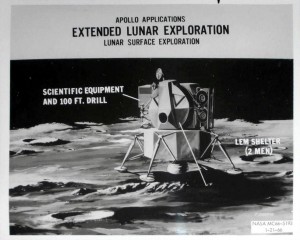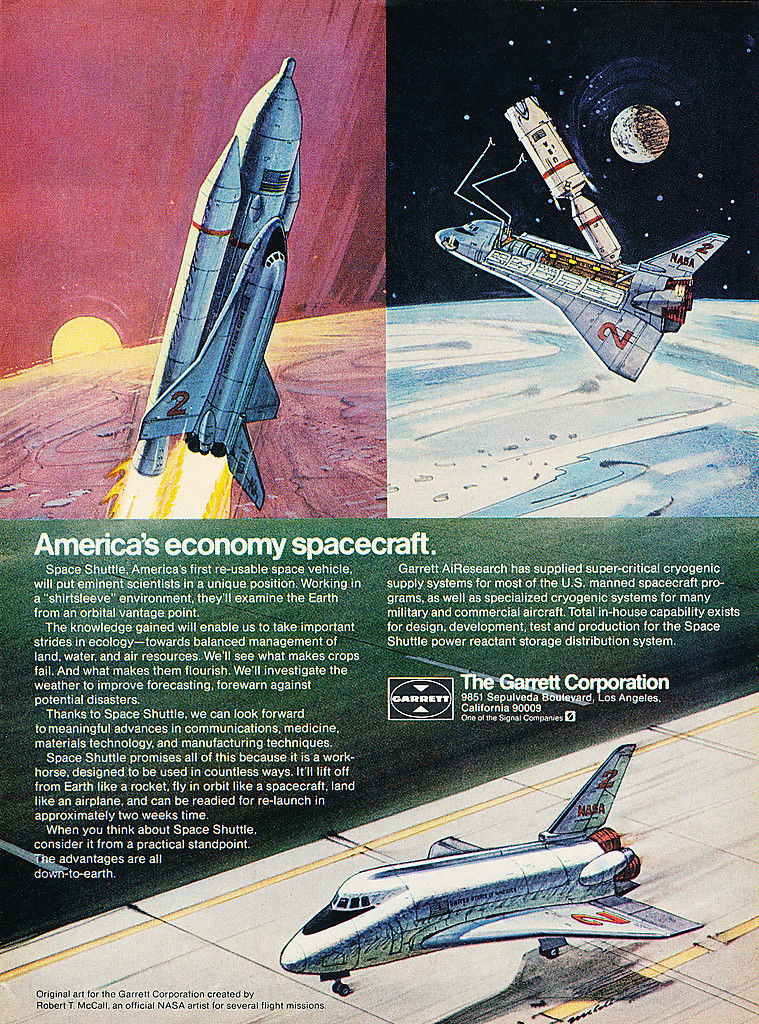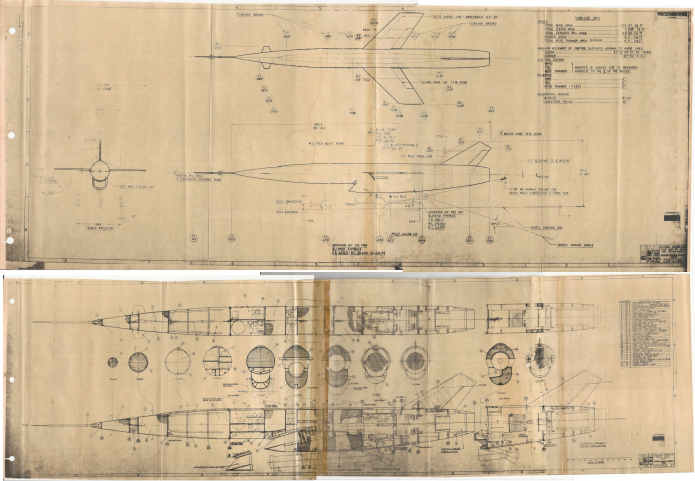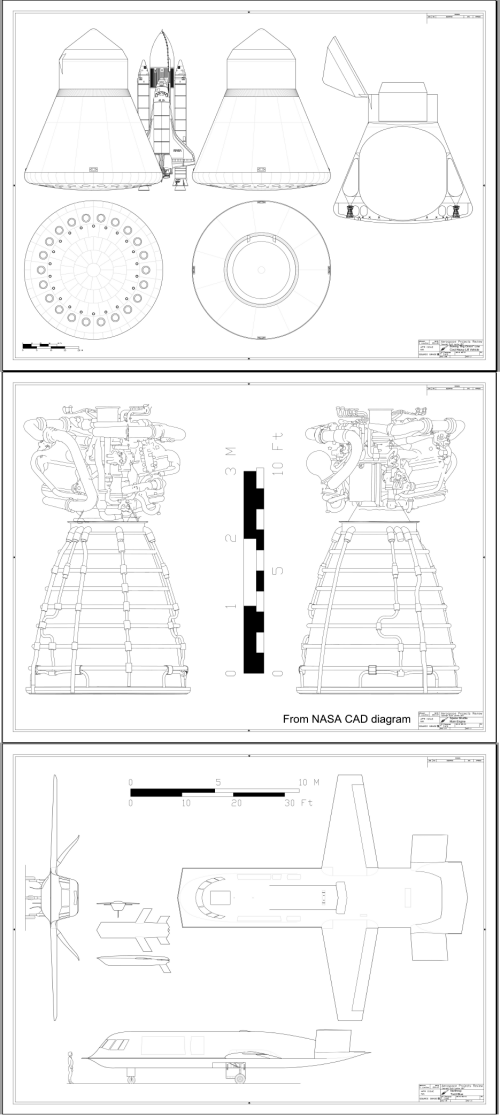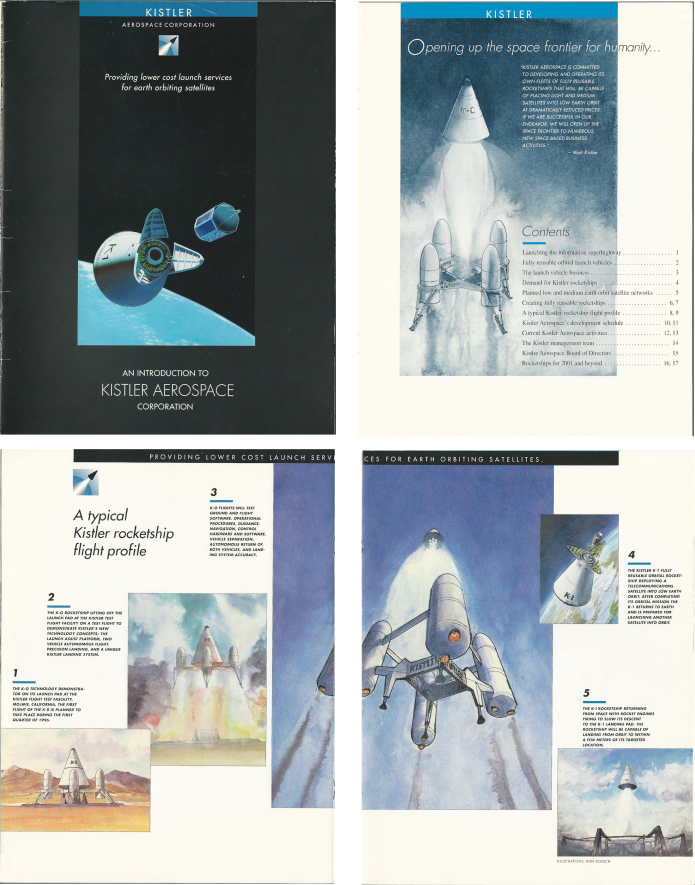An RCA concept from some time in the 1960’s for an astronaut maneuvering unit that was to use voice controls. This would negate the need for hand controls, but it seems unlikely that 1960’s technology was quite up to the task. Image from HERE. Note that while the backpack is depicted in some detail, the Apollo spacecraft in the background is quite inaccurate and minimally detailed.
NOTE: this is the third official “PDF Review.” The idea is to present interesting online resources for those interested in the sort of aerospace oddities that you can find in the pages of Aerospace Projects Review. This little project is supported through my Patreon campaign; at current levels, I’ll post two such reviews per month. If you’d like to see more, or just want to contribute to help me along, please consider becoming a patron. This PDF was originally on the NASA Technical Report Server. But it seems to no longer be there… probably a victim of the needless security panic, NTRS shutdown and subsequent database lobotomy. So, I’m hosting the 17 megabyte PDF file HERE: Advanced Atlas Launch Vehicle Digest
In the mid-1960’s, Convair produced an unknown number of issues of a a magazine-like publication about the Atlas, this being issue #2 from April, 1967. This described the state of the Atlas space launch vehicle at the time… recent successes and configurations available or soon to be available.
Described and illustrated are the various strap-on solid rocket boosters, upper stages and payload fairings available. This is done with quite a number of reasonably high quality engineering diagrams and paintings, trajectory diagrams, data tables and graphs showing payload and velocity ranges. This “digest” would be useful for preliminary payload planning, for missions from 100 n.mi. circular orbits, to geosynchronous transfers, lunar impact missions and planetary flyby missions as far as Pluto.
The illustrations are, as might be expected from a 1967-vintage publication, all non-computer generated.
—————
As the OPEC oil embargo of the 1970’s ground down the American economy and jacked up the cost of transportation, many studies were made of alternative propulsion systems. For cars and buses and the like, electrical systems were at least theoretically feasible, though even today fully electric ground transport remains problematic. But electric aircraft were out of the question. Similarly, jetliners could not be retrofitted to burn coal or wood, or run off solar power. So that limited the options. One available option was liquid hydrogen. Long since proven on rockets, liquid hydrogen had been used to power jet engines in an experimental capacity. In theory it makes great jet fuel… lots of energy, and produced with no need of oil whatsoever (a nuclear reactor and an electrolysis system can do it, though there are more efficient means). But there were two major down sides: it’s a serious cryogen, requiring vacuum dewars for storage, and the density is pathetically low. Thus a jetliner would need fairly gigantic fuel tanks.
Lockheed of course studied the idea, using their last commercial airliner, the L-1011, as the basis. One concept called for giant fuel tanks to be carried on the wings, making the plane look almost like three aircraft flying in close formation; another idea was to stretch the fuselage and insert propellant tanks in front of and behind the passenger compartment. This would of course separate the passengers from the pilots. Also studied was the same idea but for an L-1011 freighter, artwork for which is shown below.
The idea would have almost certainly worked. But it would have been a logistical headache of the worst kind. None of the existing airport refueling infrastructure would have been usable, and the crews would have to be especially trained. Jet fuel can be stored in simple tanks; liquid hydrogen needs much more careful management to minimize boiloff.
Found on ebay, an artists impression of a Hamilton Standard concept for a one-man rocket propulsion system for use by lunar explorers. Dating from 1964, this is a “rocket belt” similar to that built and flown by Bell. The lack of atmosphere would give the rocket nozzles better performance than in Earths atmosphere, and the lower lunar gravity would mean that lower thrust would be needed. Still, performance would likely have been rather disappointing… at best a few minutes of thrust.
NOTE: this is the second official “PDF Review.” The idea is to present interesting online resources for those interested in the sort of aerospace oddities that you can find in the pages of Aerospace Projects Review. This little project is supported through my Patreon campaign; at current levels, I’ll post two such reviews per month. If you’d like to see more, or just want to contribute to help me along, please consider becoming a patron.
——————-
In 1948, the Langley Aeronautical Laboratory, Langley Field, VA, put oput a technical paper with the snappy title “The Effect of Negative Dihedral, Tip Droop, and Wing-tip Shape on the Low-speed Aerodynamic Characteristics of a Complete Model Having a 45 Degrees Sweptback Wing.” This described the results of wind tunnel testing of a model of the Bel X-1 supersonic research aircraft with swept wings. At the time, supersonic aerodynamics was in its infancy, and while it was known by this point that swept wings had superior supersonic drag than unswept wings, the details were murky.
Numerous studies were made of re-winged X-1’s, including forward-swept wings. As it happened, no version of the X-1 was ever equipped with anything but unswept wings (though the later versions had substantially thinner wings). Such studies were performed by not only Bell Aircraft but also the NACA; the latter studies may have used the Bell X-1 wind tunnel models, but may not have indicated an intention or desire to actually re-wing an X-1. Instead, the X-1 was a known commodity, and by modifying an existing wind tunnel model, changes in performance could be quickly and inexpensively determined without having to design and build entirely new models.
In this study, several different wingtips were evaluated, including squared-off tips, rounded tips and droops tips.
CONCLUDING REMARKS
The results of low- speed tests made to determine the effects of negative geometric dihedral, tip droop, and tip shape on the aerodynamic characteristics of a complete model having a 45 degree sweptback wing are summarized as follows :
1. The use of -10 degree geometric dihedral resulted in a reduction in the average value of the effective-dihedral parameter C2V through the low and moderate lift- coefficient range that was about 65 percent as great as that usually obtained for unswept wings.
2 . Drooping the wing tips 45 degrees (maintaining the same ground clearance as that with -100 geometric dihedral) resulted in a decrease in the average value of C2V through the low and moderate lift-coefficient range equivalent to about -14 degrees geometric dihedral and also caused an increase in the maximum lift coefficient of 0.15.
3. Changes in the wing- tip plan form indicated that C2V was lowest for the parallel and circular tips and highest for the tips skewed either in or out .
4. By changing a square- cut tip to a faired tip of revolution, the maximum value of C2V for the model with parallel tips was reduced by an amount equivalent to about -4 degrees geometric dihedral.
5. Deflecting the wing tip (from zero) resulted in rolling and yawing moments about the same as that produced by a conventional aileron on a similar sweptback- wing model.
This file was originally added to the NASA Technical Report Server in the mid/late 1990s, and featured rather sad 2-bit (black and white) scanning… fine for text, adequate for line drawings, terrible for art & photos. When I re-accessed it for this review to make sure that it was still available, it had been re-scanned and re-uploaded in full color, provided vastly better image quality.
The abstract can be seen HERE. The PDF file can be downloaded directly HERE.
Three-view of the swept-wing X-1 showing levels of dihedral.
Photo of the wing tunnel model. Note the markings applied to the model. As wing tunnel models are very rarely painted except as needed by the science of the tests, this indicates that this may have been a conventional X-1 wing tunnel model that, after testing, had been painted to turn it into a display model… and then brought back into the shop and re-purposed as a wind tunnel model again.
Drooped wingtips studied.
Different wing planforms & tips examined.
Found on ebay, a bit of NASA promo art depicting a 1966 Apollo Applications Program concept for a LEM Shelter. This would have been a more or less stock descent module with an ascent module without the ability to ascend. It would thus have been capable of transporting more cargo to the surface, including a habitat better capable of supporting a crew for a week or more. Transport back up to lunar orbit would have been accomplished via another LEM.
From 1973, a magazine ad for the Garrett Corporation (avionics manufacturer) showing Robert McCall paintings of the Space Shuttle system as then envisioned. At that point, the basics of the Space Transportation System were worked out, but the details were up in the air…
As shown here – which appears to represent a Rockwell design – the Orbiter features a “ridge” down the centerline of the cargo bay doors. This was originally where the manipulator arm (or “arms” as shown here) was supposed to go. The cargo bay was a cylindrical volume, and when filled with a cylindrical payload there would obviously be no room for an arm. So the arm had to fit *outside* that cylindrical volume.
Additional details: it was originally thought that exposed RCS thrusters on the sides of the nose would get roasted on re-entry, so they were hidden behind doors in earlier designs. The proboscis at the front o the ET was a solid rocket motor, used to de-orbit the tank. As originally envisioned, the tank would make it to orbit, or nearly so; it would need to be propulsively de-orbited so that it would come down over the ocean and cause no damage. In the end, the role of the orbital maneuvering system was bumped up so that staging off the ET was carried out just a bit below stable orbit; as a result the ET would naturally re-enter over the Indian Ocean without further effort.
And a lot of early art depicted the Shuttle with lots and lots of paint. Not only on the External Tank, but on the *underside* of the orbiter. I assume that this is just artistic license rather than anyone actually believing that white paint would survive re-entry.
The rewards for my Patreon patrons have now been released. This months selections include:
Diagram: a very large, very nice layout of the Avro Arrow. This was voted on by the top-level patrons.
Document: a report on the Vought Regulus II cruise missile which includes some very nice layout and inboard diagrams of both the operational and test missiles. This was voted for by the top-level patrons.
Document: “Introduction to Kistler Aerospace Corporation,” a full-color brochure from 1995 describing the K-0 sorta-SSTO launch vehicle (which would use an “launch platform”).
Additionally, for the higher-level patrons ($5 and up) there are three all-new CAD diagrams:
1) The Boeing “Big Onion” SSTO from the 1970s, meant to launch Solar Power Satellite components
2) The Space Shuttle Main Engine
3) The Northrop Tacit Blue stealth testbed. This is, so far as I’m aware, the first time that a clear and accurate three-view of this aircraft has been released publicly.
I’ve changed things a little bit from last month. At each patronage level, there are different levels of rewards. Each level has its own message under the “Creations” tab just above the APR logo at my Patreon page. And in the upper righthand corner of each message is a little gray rectangle with “Zip” in it. This is the link to the ZIP archive containing the files for that specific patronage level. If you are a higher-level patron, this may not include all the files you are entitled to. You should be able to download everything from the lower-level patron messages.
